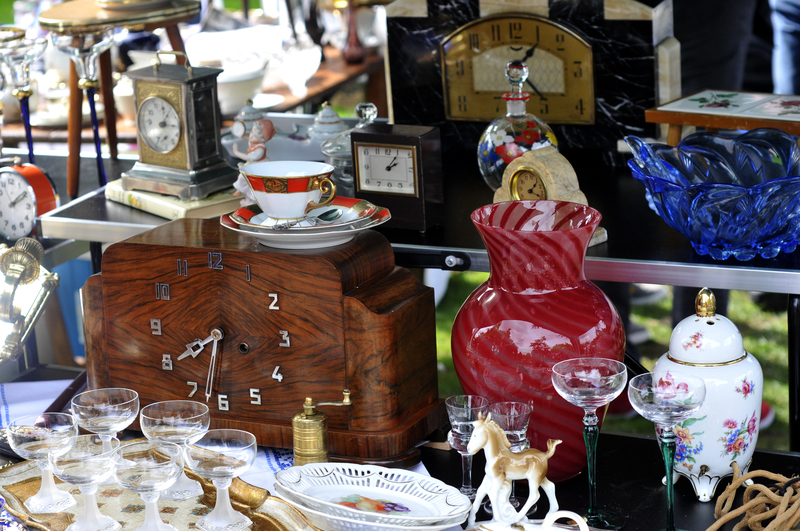Effective Strategies for Maintaining a Clutter-Free Home After a Major Cleanup
Congratulations! You've just completed a major home cleanup and your space finally feels open, organized, and refreshingly clear. But now comes the real challenge: how do you maintain a clutter-free home going forward? It's easy for belongings to accumulate and chaos to creep back in without practical systems in place. In this comprehensive guide, we will explore proven strategies and daily habits that help ensure your home remains tidy, organized, and welcoming long after the big cleanup day is over.

Why Maintenance is Crucial After a Major Decluttering
It's tempting to relax after a deep clean, but maintenance is the secret to a perpetually clutter-free living environment. Without ongoing attention, clutter will gradually re-appear, undoing your hard work. Implementing smart strategies not only keeps your home orderly but also saves you time, reduces stress, and improves your overall quality of life.
Key Benefits of Maintaining a Clutter-Free Home
- Enhanced focus and productivity
- Reduced anxiety and feeling of overwhelm
- More inviting space for friends and family
- Cleaner, healthier living environment
- Time and money saved by not replacing lost items
Set Realistic Organization Goals
Before diving into daily routines, step back and define your vision of a clutter-free home. Not every room needs to look like a minimalist showroom; instead, focus on what works for your lifestyle and family needs. Set attainable goals--maybe it's keeping counters clear or ensuring shoes are stored neatly.
- List out the problem areas that quickly get messy
- Discuss expectations with all household members
- Embrace progress over perfection; tiny improvements add up
Daily Habits for a Clutter-Free Environment
Consistency is crucial for maintaining a clean home. The secret lies in developing daily routines that prevent mess from accumulating. Incorporate these habits into your lifestyle:
1. The 5-Minute Tidy
Spend 5 minutes at the end of each day quickly resetting spaces. Put away stray items, tidy up common areas, and check high-traffic zones like kitchen counters and entryways.
2. Practice the "One In, One Out" Rule
This simple but effective strategy ensures your possessions never exceed available storage. Whenever a new item comes into your home, commit to removing one similar item. This works especially well for clothing, kitchen gadgets, and kids' toys.
3. Handle Mail and Paperwork Immediately
Paper clutter builds up fast! Sort mail as soon as it arrives: recycle junk mail, file important documents, and address bills right away. Designate an area for necessary paperwork, and regularly purge what you no longer need.
4. Clean as You Go
- Wash dishes immediately after meals
- Wipe down counters and tables after use
- Pick up items after using them rather than leaving for "later"
Weekly and Monthly Clutter Management Strategies
While daily habits form the backbone of a tidy home, weekly and monthly routines ensure deeper order and help you spot problem areas before they spiral out of control.
Weekly Declutter Sweep
- Pick a set day each week for a quick walkthrough of your home.
- Gather out-of-place items and return them to their designated spots.
- Focus on "hot spots" like entryways, bedrooms, and living room surfaces.
Monthly Mini-Declutter Sessions
- Choose one category or zone each month (e.g., kitchen drawers, bathroom cabinets, kids' toys).
- Sort items, donating or discarding what you no longer need.
- Wipe down storage areas before reorganizing.
Scheduling these sessions prevents clutter from building up and makes each mini-project manageable.
Create Smart Storage Solutions
A clutter-free home depends on efficient storage. Items should have a "home" and be easily accessible. Investing in smart storage solutions and rethinking your layout can make all the difference.
Storage Ideas for Every Room
- Entryway: Use hooks for coats, bins for shoes, and a tray for keys and mail.
- Kitchen: Use drawer organizers, vertical shelves, and under-sink baskets.
- Living Room: Baskets for magazines, multifunctional furniture with hidden storage.
- Bedrooms: Storage ottomans, bed risers for box storage, closet dividers.
- Bathrooms: Over-the-toilet shelves, baskets under sinks, wall-mounted racks.
Label storage bins and shelves so every family member knows where things go.
Adopt the "Container Concept"
This minimalist-inspired method helps you contain clutter by deciding how much space you will allow for each type of item (books, toys, linens, etc.). Once the assigned container is full, it's time to reduce or rotate your collection.
Declutter Mindset: Preventing Clutter Before It Starts
To keep a tidy house, rethink your habits and mindset about possessions. Clutter re-accumulates when we continually bring in items we don't really need or love. With fresh awareness, you can prevent excess belongings from piling up in the first place.
Tips for Mindful Acquisition
- Think twice before purchasing new items--is it essential or truly valued?
- Unsubscribe from promotional emails and direct mail that encourage impulse buying.
- Borrow or rent rarely used items (such as tools or party supplies) instead of buying.
- Focus on quality over quantity in all purchases.
Involve the Whole Household
A clutter-free house is a team effort. Everyone living in the space should play a role in keeping it organized. Assign age-appropriate tasks and make tidying up a daily shared habit.
- Hold monthly family declutter sessions--make it fun with music or rewards.
- Designate zones of responsibility for each person (e.g., bedrooms, living room, bathroom).
- Encourage kids to donate toys they've outgrown, teaching them the value of sharing.
Consistent family participation makes organization sustainable and less overwhelming for one person.
Refresh Your Clutter-Free Motivation
It's normal for motivation to dip. To keep your home clutter-free long-term, celebrate your progress and regularly remind yourself of the benefits of maintaining order. Consider:
- Taking before-and-after pictures to track progress
- Rewarding yourself (and your family) when routines are kept
- Envisioning the relief and pride of living in a consistently tidy space
- Sharing your journey with friends, inspiring others to declutter
Combat Common Clutter Traps
Every home has specific "clutter traps"--areas where mess seems to accumulate no matter what. Effective clutter management techniques involve identifying these zones and creating improved systems.
Example Clutter Hot Spots and Solutions
- Kitchen Counters: Store non-essential appliances in cabinets and limit items to essentials.
- Entryway: Use baskets, trays, or wall hooks to encourage immediate sorting and storage.
- Bedroom Closets: Practice seasonal clothing rotations and regular wardrobe audits.
- Paperwork Pile-Ups: Go digital when possible or schedule weekly paper sorting times.
Pro Tip: If an area remains cluttered despite your best efforts, rethink its storage design or function. Sometimes moving furniture or adding shelves can make all the difference.
Declutter and Organize Digitally
Don't forget your digital life! Digital clutter--from overflowing inboxes to messy desktops--can impact your sense of order just as much as physical mess. Tackle digital disorganization by:
- Unsubscribing from non-essential emails
- Organizing computer files with clearly labeled folders
- Setting aside 10 minutes a week to delete old documents and photos
- Utilizing apps to manage passwords, tasks, or home inventories
When Clutter Returns: How to Reset
Life happens! Sometimes, even the most organized homes experience moments of mess due to busy schedules, family events, or other circumstances. The key is to avoid guilt and have a reliable plan for getting back on track.
Quick Reset Strategy
- Pick one room or zone to reset first--don't try to do the whole house at once.
- Set a timer for 15-20 minutes and work quickly without distraction.
- Prioritize surfaces and visible clutter to get an instant sense of order.
- Enlist help if possible; teamwork makes the process faster and more enjoyable.
Remember, a clutter-free lifestyle is not about perfection. It's about establishing habits and systems that help you quickly restore order--again and again.

Clutter-Free Home Maintenance FAQs
How often should I do a major declutter?
If you follow regular maintenance and mini-declutter routines, you may only need a big purge once a year--or less often. The more consistent your habits, the less overwhelming such tasks will be.
What if my family isn't on board?
Lead by example. Share the benefits of a neat space and involve everyone in decision-making about what to keep or donate. Patience and ongoing communication are essential.
How do I deal with sentimental items?
Keep a small container or box for precious keepsakes, focusing on the most meaningful. Limit nostalgia-driven storage and try displaying special items instead of boxing them away.
Are there any apps for clutter management?
Yes! Consider apps such as Tody (for chore scheduling), Sortly (for home inventory), or Evernote (for digital organizing). These tools can keep you accountable and streamlined.
Conclusion: Enjoying a Lastingly Clutter-Free Home
Maintaining a clutter-free home after a major cleanup is achievable with realistic expectations, consistent routines, and by fostering a mindful approach to possessions. Start with small, daily habits, refresh your motivation regularly, and make organization a shared family responsibility. With these effective strategies, you'll not only preserve your peaceful, tidy environment--you'll also enhance your well-being and enjoyment of home for years to come.
Remember, the journey to a clutter-free life is ongoing. Embrace the process, celebrate your progress, and enjoy the freedom and calm of your organized sanctuary.